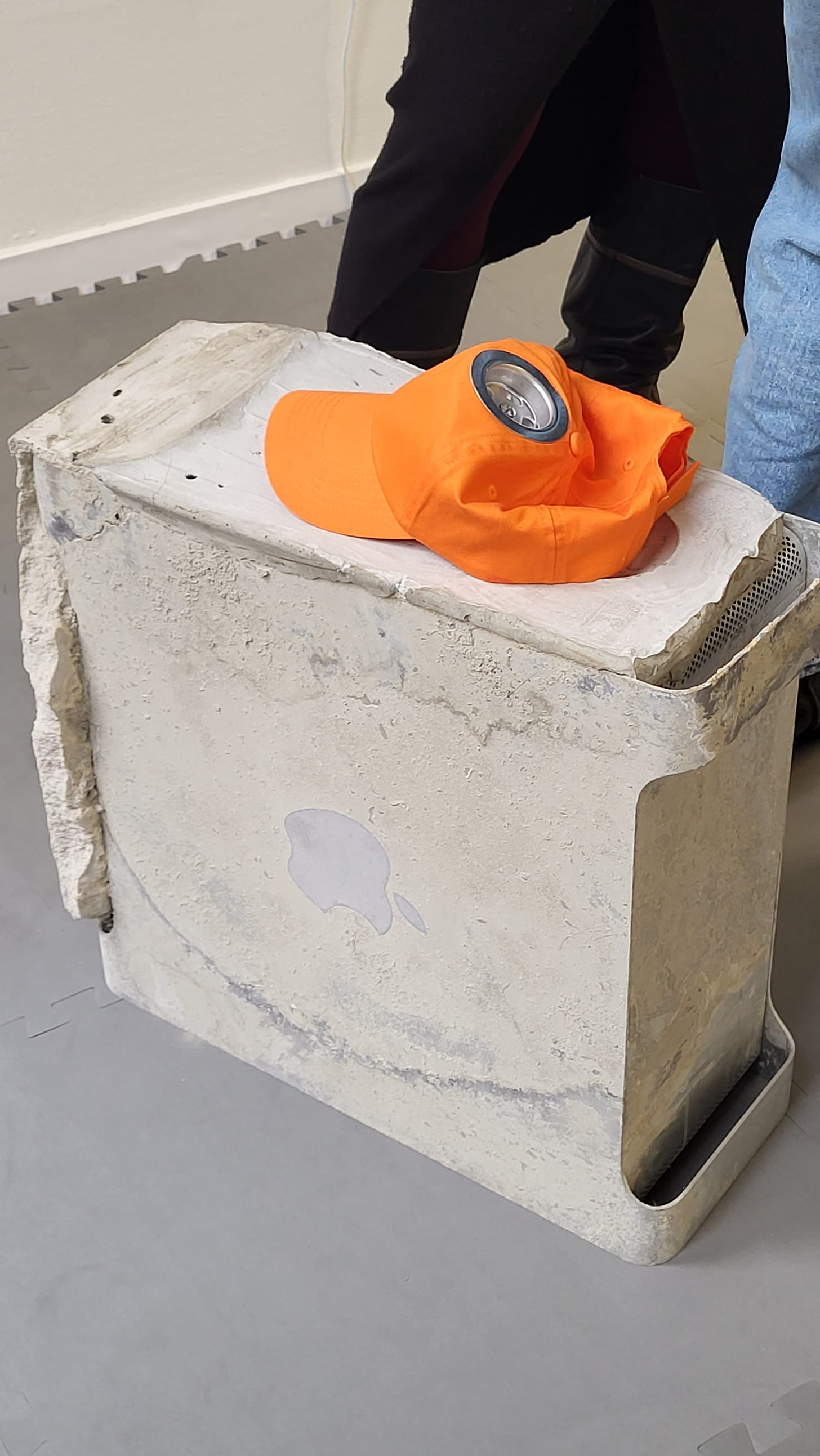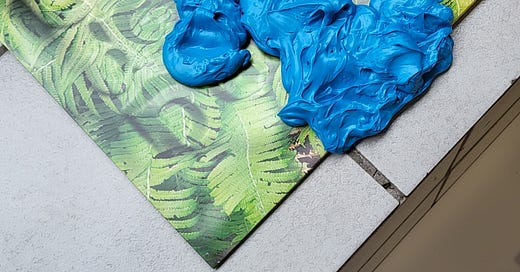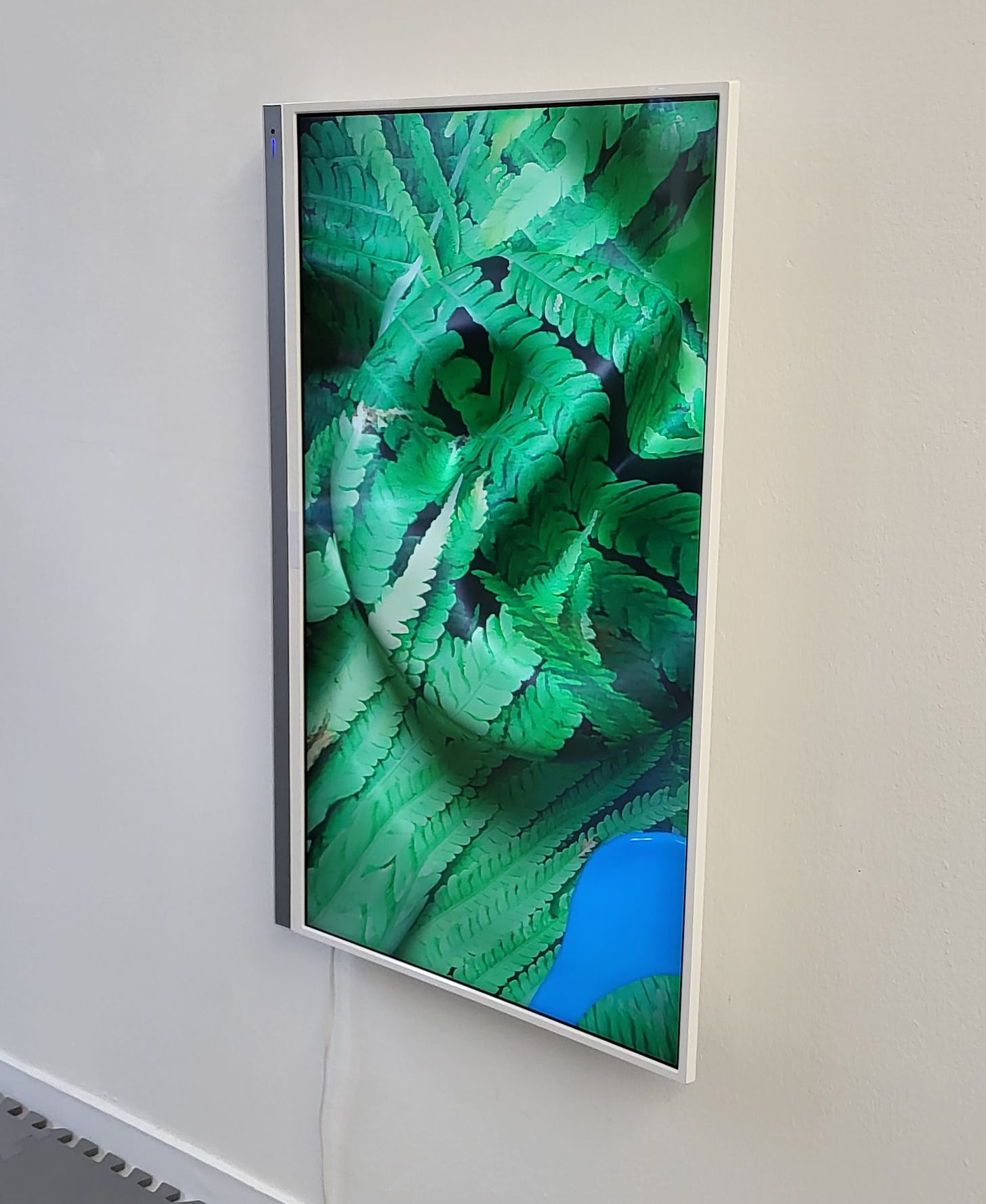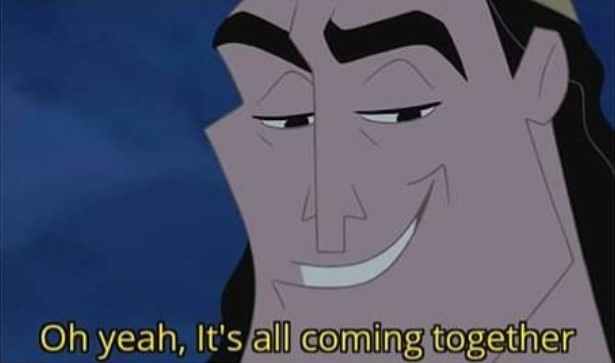A sci-fi archaeology playground
Gooey liquids meet solid fossils dug out in a jungle. In what timeline are we? Crème de la Deutz brings together sound, sculpture, and film.
Raving underneath the swaying ferns
Once you pass the threshold to the white high-ceiling showroom, your feet stand on a soft grey puzzle mat like those in a kindergarten or gym. The space is filled with entrancing sounds, rave music made by the artist Alfons Knogl and curator Holger Otten (both Gen X, German). Slight, barely noticeable changes create a physical feel with stronger or lighter bass. Together, Alfons and Holger are Crème de la Deutz, a band based in Köln-Deutz on the eastern shore of the Rhine, performing with analog synthesizers and a bass guitar. For the exhibition with the same title, they made four tracks mainly repeating the same sounds and rhythms, available on vinyl. The band will additionally perform the tracks in an art space and a nightclub in Düsseldorf. Crème de la Deutz suggests some “crème de la crème” high-end quality, while Colonians call Deutz part of the “Schälsick”, aka the wrong side of the Rhine. Here, the mix of high and low is a recurring theme.

The music sets the vibe for the three sculptures by Alfons: Everyday objects cast in concrete with drains attached. pre-sink (CDLD II) (2023) consists of an old Apple computer Alfons dipped into concrete while leaving the logo visible. On top, he added an orange cap with a sink drain. The concrete surface suggests that the computer was dug out of the earth like a dinosaur fossil while the Apple logo and clean cap contradict that time frame. It’s rather like a fossil from the future that archeologists will discover many centuries – if not millenniums – from now. With the other works, it’s challenging to make out the exact objects encrusted in concrete. The shapes might be familiar but never definitive.

Chat, is this real?
Casting random objects into new shapes is something art history has seen plenty of. The Crème de la Deutz works are very much Surrealism-coded: German artist Max Ernst (1891-1976) often used objets trouvés, found objects, to shape new figures out of them. Alfons, too, makes something new suggesting something slightly familiar, recognizable inside. That is what makes the pieces surreal, something out of another world. At the same time, it’s giving Dada, an art movement that came a bit before Surrealism. You have probably seen a picture of Fountain (1917), a pissoir turned sideways. An iconic example of Dada by French artist Marcel Duchamp (1887-1968). By simply putting a pissoir on a pedestal, signing it, and calling it art, our man Marcel started a whole trend of artists throwing together high and low art, valuable and tacky. Aflons builds on this idea. When he researches products to use for his artworks, he is curious about where the material comes from and how the same base material – be it plastic or metal – is used for both high-end and cheap products: An Apple computer is made of the same stuff a play phone is, and here we are obsessing about brands anyways.

The pronouns are He, not Her
A mannequin leg pops out a polyester overall imprinted with a fern pattern which looks like a take on military camouflage suits. Alfons said that dancers might wear such costumes at the planned concerts, “but it might get quite hot inside”, he adds with a smile. With fades and condition (CDLD V) (2023), Alfons pulled an Isa Genzken (Babyboomer, German) on us and thought we wouldn’t notice. One of Isa’s signature moves is mixing store mannequins with carnival costumes or other random objects with what is considered valuable or expensive. I’d say that Isa walked so Alfons could run, but he rather casually strolled.
And down the drain it goes…
To Alfons, ferns look the way his music sounds: soft, hypnotic, gentle. It’s like he put a microphone on a plant and let it make its own track. The fern is the backdrop of the vinyl logo and a short untitled film by video artist Jan Hoeft (Millenial, German) screened on a wall. In the loop film, a blue gooey liquid is poured on the softly moving farn fabric. The liquid flows from a levitating orange tap, but where does it come from? We might never know. Ferns are the oldest category of plants to still exist. They were around when dinosaurs walked the earth unbothered until they became the crude oil we make plastics of. The material that is so familiar to us shows no clue to its origin. Alfons’ limited edition pieces, too, look like colored cake frosting or plastic bottles molten by the sun with the same orange taps as in the film.
Alfons observes how materials go from one place to another and change from one condition into another. He is not critical, there is no call to action. Plastic, like water, has become something without origin or destination. It comes and goes without us ever knowing where it ends up. It is as easy as pouring it down the drain. Out of sight, out of mind.

You can dig out ancient modern artifacts and inspect the sewage system at Crème de la Deutz until August 31, 2023, at Matjö, Raum für Kunst.
Matjö Raum für Kunst
Mathiasstr. 15
50676 Köln, K, Germany
Open Wednesday & Thursday from 2 pm until 6 pm
Free entry
Website
If this review made you feel like eating some cupcake frosting or putting on a silly costume, feel free to subscribe to my substack to keep getting updated on more exhibitions in Cologne. And if you know someone who would have fun with my content, feel free to send them this review.
See you soon!
Jennifer
The Gen Z Art Critic






